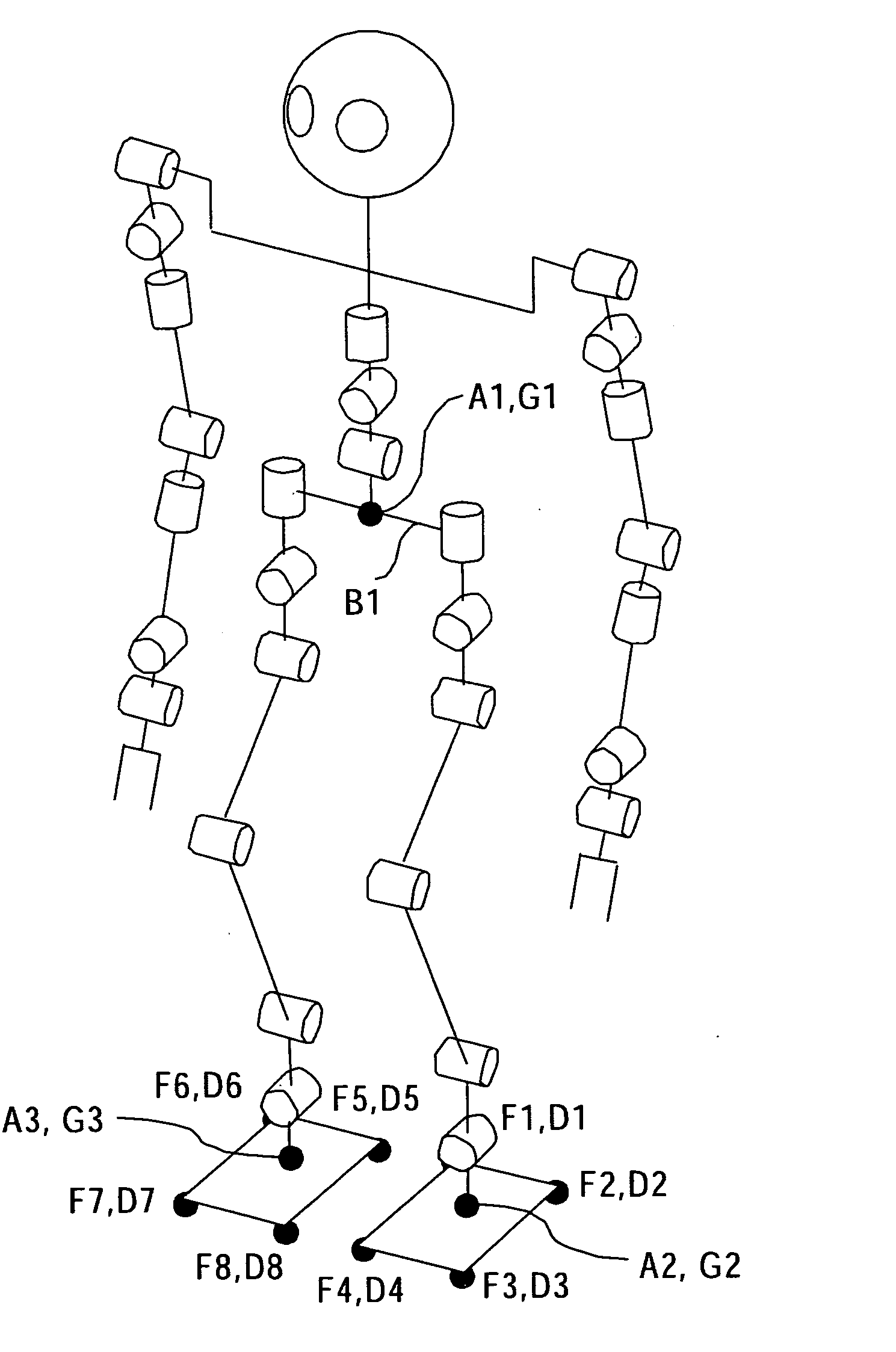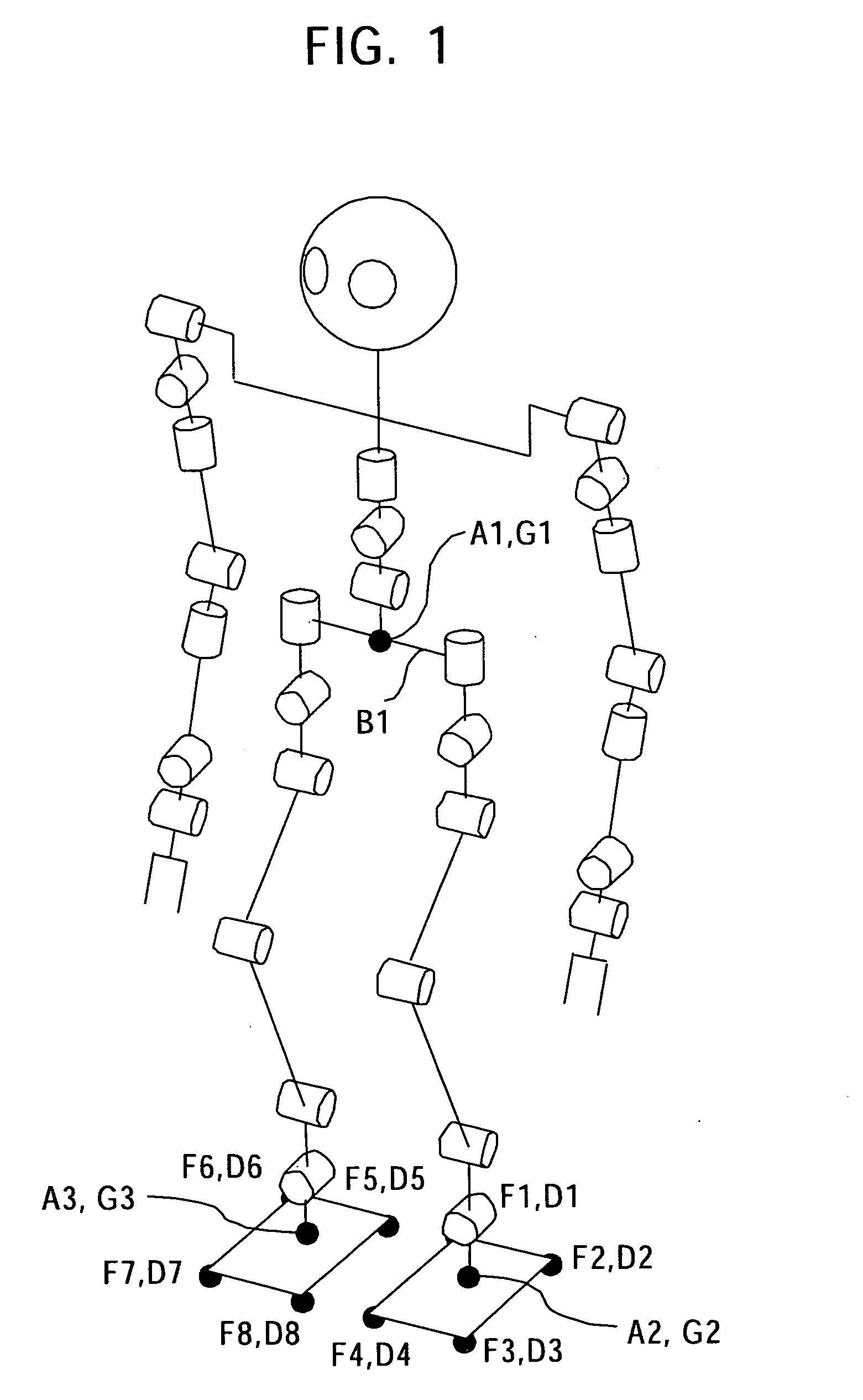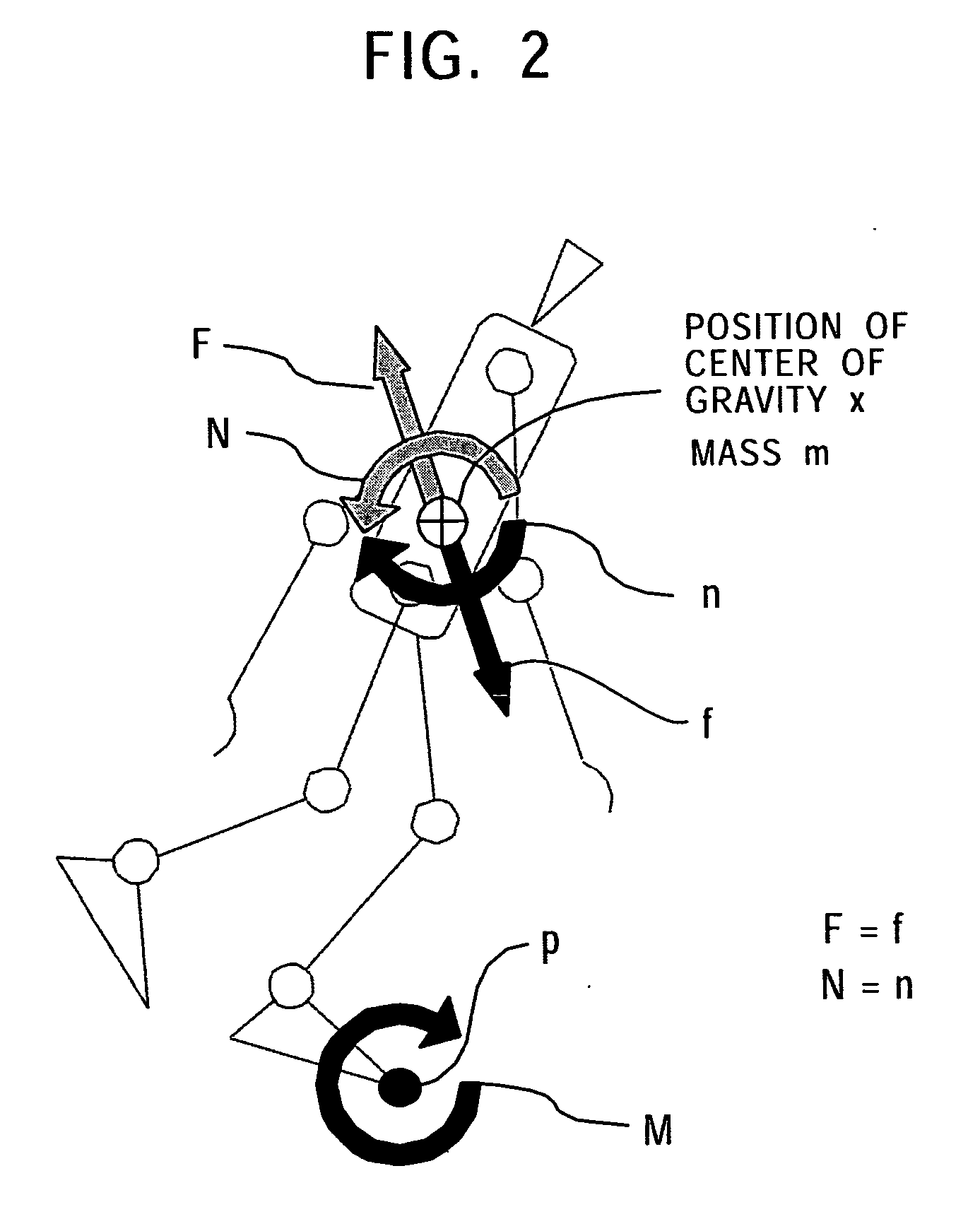Robot device, motion control device for robot device and motion control method
a robot and motion control technology, applied in the field of robot devices, can solve the problems of unstable bipedal motion in an erect orientation, difficulty in controlling orientation and walking, and stop performing the task of the robo
- Summary
- Abstract
- Description
- Claims
- Application Information
AI Technical Summary
Benefits of technology
Problems solved by technology
Method used
Image
Examples
Embodiment Construction
The present invention provides a controlling method which makes it possible to generate a dynamically stable motion pattern in real time for a motion having a floor contact period and a floor non-contact period in a legged mobile robot. The controlling method of the present invention makes it possible for the legged mobile robot to move by immediately calculating a dynamically stable motion pattern while satisfying outside requests, such as footstep / period, in a situation in which the legged mobile robot not only walks but also hops or jumps or runs or successively performs these motions.
Hereunder, an embodiment of the present invention will be described in detail with reference to the drawings.
FIG. 1 is a schematic view of the structure of a legged mobile robot of an embodiment showing its degrees of freedom.
The robot shown in FIG. 1 has four limbs, the left and right arms and the left and right legs, mounted to a main body. Each of the left and right arms has seven degrees o...
PUM
 Login to View More
Login to View More Abstract
Description
Claims
Application Information
 Login to View More
Login to View More - R&D
- Intellectual Property
- Life Sciences
- Materials
- Tech Scout
- Unparalleled Data Quality
- Higher Quality Content
- 60% Fewer Hallucinations
Browse by: Latest US Patents, China's latest patents, Technical Efficacy Thesaurus, Application Domain, Technology Topic, Popular Technical Reports.
© 2025 PatSnap. All rights reserved.Legal|Privacy policy|Modern Slavery Act Transparency Statement|Sitemap|About US| Contact US: help@patsnap.com



